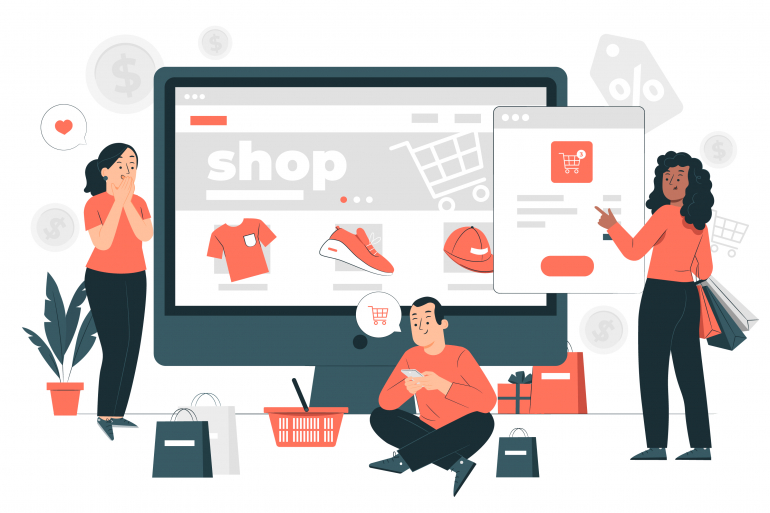The web design for ecommerce has changed dramatically. It focuses on the ideal combination of functionality and aesthetics. Every few years, new design trends are introduced and embraced. To get the most out of your ecommerce web design company, focus on these latest trends when searching for an ecommerce website development company.
Magento 2 is a powerful and well-known platform that is essential in the design and development of ecommerce websites. Magento 2 enables businesses to create visually stunning and user-friendly online stores thanks to its extensive feature set and flexibility. Its scalability and robust architecture make it an
ideal choice for businesses of all sizes, from small startups to large enterprises. Magento 2 includes a plethora of customizable themes and templates, allowing businesses to create one-of-a-kind and engaging shopping experiences for their customers. It also includes advanced features such as inventory management, payment gateway integration, and marketing tools, allowing businesses to streamline their operations and increase sales. With its broad range of capabilities and adaptability,
1. Responsive Design
This is the most current trend in e-commerce website design. More people use mobile devices today to search for information, products, and services than desktops. The percentage of people shopping via smartphones and tablets has increased dramatically. Mobile-friendly e-commerce shops are now a necessity. Even search engines are now placing more importance on mobile-friendly websites. Your online store will not be able to respond quickly enough to compete in search rankings or traffic generation.
2. Material Design
Material design was introduced by Google a few years back to improve the interface and appearance of Android apps. It is a well-known strategy for websites and mobile layouts. It is also compatible with e-commerce website development.
Numerous major e-commerce websites have adopted card-like layouts, responsive transitions, and animations. Material design will continue to grow in popularity, and you should embrace it for your site’s success.
3. Scroll down Layout
You will see more ecommerce websites that offer endless scrolling because it is much easier to scroll on mobile devices than to go to the next page. This strategy reduces the need to reload high-definition images on new pages. Visitors will be able to view all products from the category on one page without needing to go to different pages.
4. Hamburger Menus on the Left
Most e-commerce websites have a different menu. It’s more about reducing space and moving away from the traditional design. Many ecommerce website developers like to place a hamburger menu in the upper left corner. To expand the menu and go to the desired page. They can now focus on the page and products by moving the menu away from their eyes.
5. Use Vivid Colors and Images
The use of the right colours and images is crucial when selling products. Online store designers can’t ignore the importance of bright colors and vivid images. Bold colors are used in ecommerce design to draw attention to key areas. Bold colors are also more appealing than whites and grays.
Designers will use every product image to inform and attract potential customers. High-resolution photos allow customers to view your product from many angles. It includes photos of products in action.
6. User-friendly platform
Customers always prefer a user-friendly platform that allows existing and new users to search for desired products and checkout easily. Customers’ comfort while using the platform should be prioritized during the ecommerce website development process. According to statistics, 30% of customers use the search feature to find the products they want. As a result, easy navigation, a quick search option, and a smooth checkout process are essential for attracting customers and should not be neglected.
7. Security:
Security is the primary concern when conducting internet transactions. Customers trust that their confidential information is secure, such as credit/debit card numbers and passwords. Ignoring security can even result in customer losses, harming the online store’s reputation and sales. SSL encryption is required during the ecommerce website development process to ensure the security of customers’ personal information.
Closing
These are five of the most popular trends used by Ecommerce Web Design company. These trends are important to incorporate into your website design to attract more customers and impress them more.
Also Read: Website Performance And How To Prevent Its Decline.



